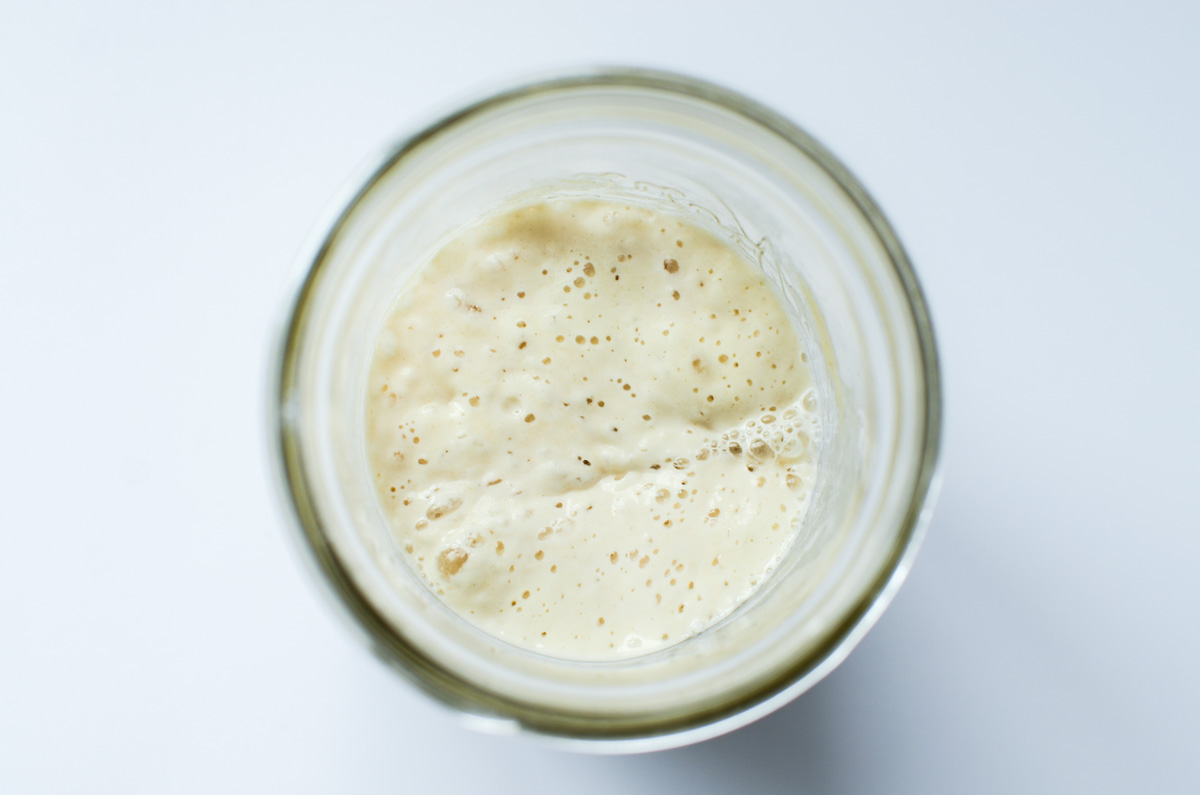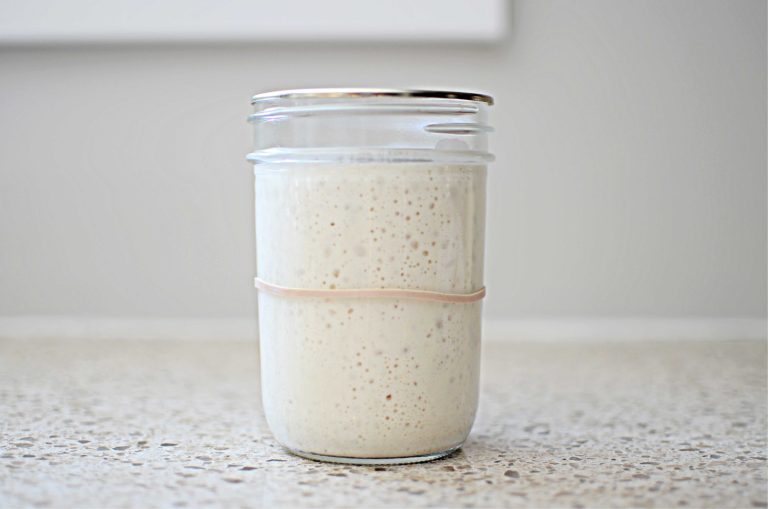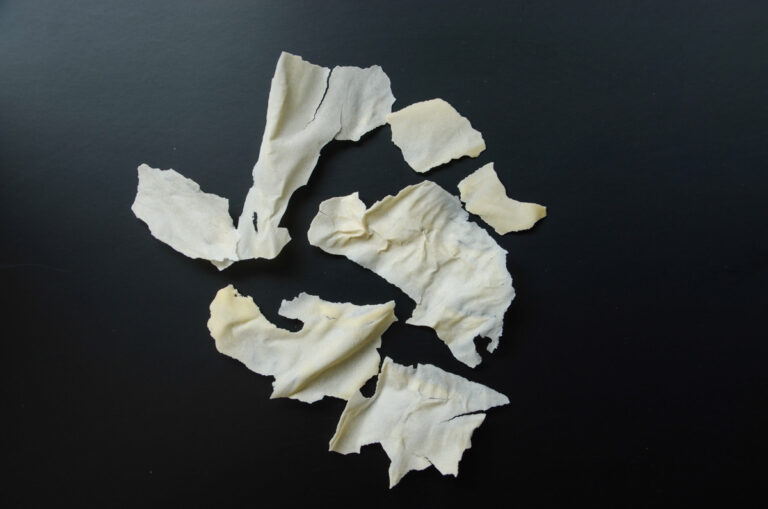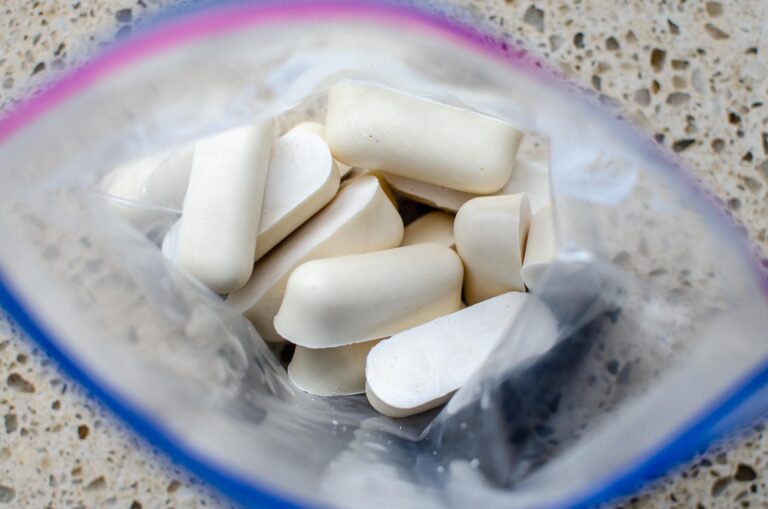How To Rehydrate A Dry Sourdough Starter
Learn how to rehydrate a dry sourdough starter into an active sourdough starter with these few simple steps.
This post may contain affiliate links. As an Amazon Associate, I may receive a small commission, at no cost to you, if you make a purchase. Please read our disclosure policy.
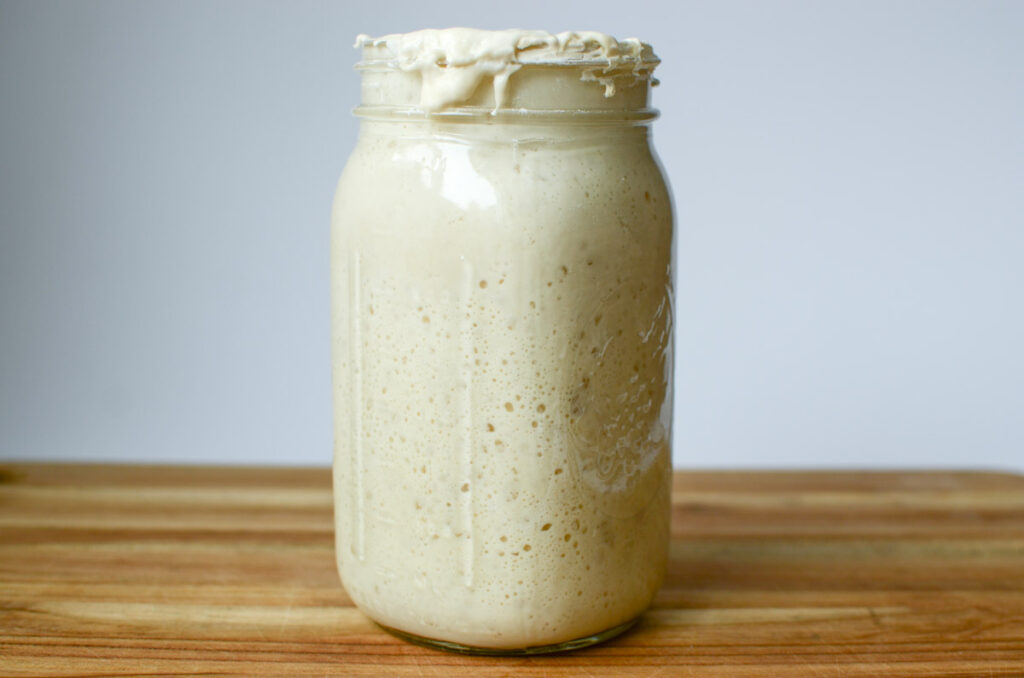
Chances are, if you are reading this, you have a dehydrated sourdough starter that needs reconstituting.
There are multiple ways to achieve a dry starter. Perhaps you got it from a friend or through the mail. Or you dried some of your own starter by leaving it to dry at room temperature, in a dehydrator, with a freeze dryer. Regardless of the drying process, the dehydrated starter will need to be rehydrated before you can use it to make delicious sourdough bread and other baked goods.
You may be asking, why dehydrate and then rehydrate a sourdough starter when you can just create a new one? Creating a starter from scratch takes a little patience, but it isn’t difficult. Reconstituting sourdough starter from a dry form gives you a jump start on the process, shortening the time it takes to have an active starter.
What Is A Dehydrated Sourdough Starter?
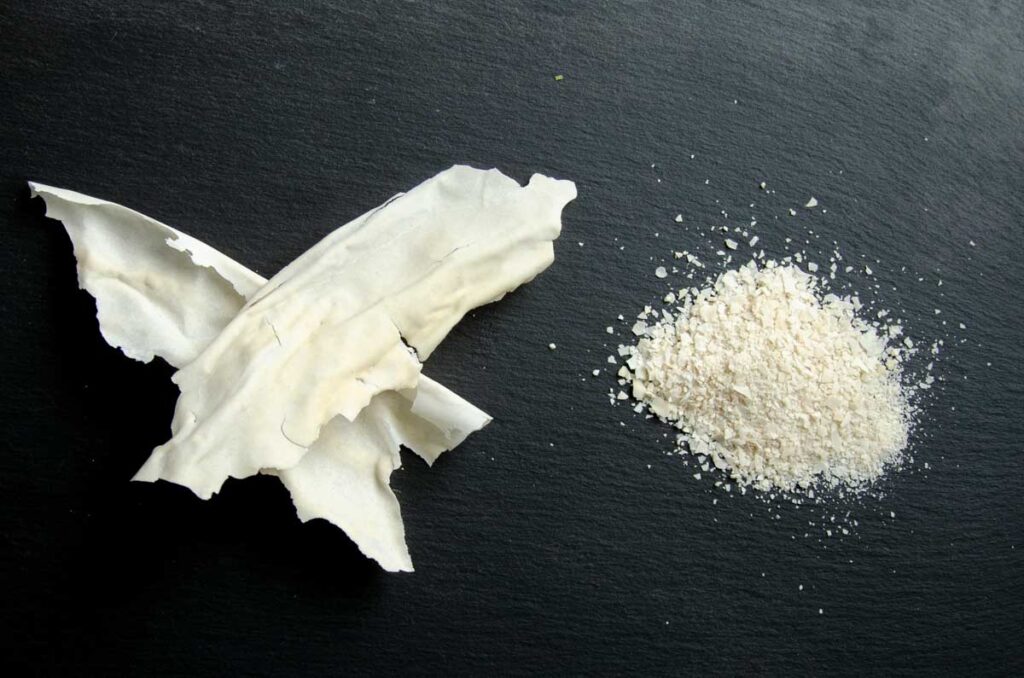
A sourdough starter is a colony teeming with lactic acid bacteria and wild yeasts. Long ago before commercial yeast was around, this is what was used for leavening baked goods, like bread or cinnamon rolls.
If the starter is exposed to air over an extended period of time, the moisture evaporates and the sourdough starter becomes dry, a shelf-stable starter without the need for daily feedings.
Here, the microbes are suspended in an inactive, or dormant state, making it a great way to preserve your sourdough starter for long-term storage.
It’s a good idea to have an extra starter on hand in the event something should happen to your starter, because at some point in your sourdough journey, there’s bound to be a reason you find yourself in need of more starters.
Equipment
- A glass jar, like a pint-size mason jar
- Kitchen scale or tablespoons
- Spoon to stir
Ingredients
- Flour – Everyone has opinions of what is the best flour to use for sourdough feedings. I find that any type of flour works to rehydrate the starter, but suggest a basic all-purpose flour since it’s readily accessible to most people. Use organic and unbleached if you can.
- Water – Any type of water will work, although I suggest using warm water if your kitchen is cool. I have seen comments saying that tap water should be left out to sit for 12-24 hours to allow the chlorine to evaporate, but I’ve had no trouble keeping a sourdough start using tap water straight from the faucet when we lived in the suburbs. Now that we have well water, we keep a Berkey water filter but I’m not always good about using filtered water for sourdough feedings.
Step-By-Step Guide How To Rehydrate A Sourdough Starter
Learn how to rehydrate sourdough starter with this simple process. With a little patience, you’ll have an active sourdough starter in just a couple of days.
Day 1:
Place the dried starter chips into a clean jar.
Using a glass jar allows you to keep an eye on the starter’s progress. This is helpful as you begin to learn how a sourdough starter works.
Add equal parts of warm water and flour to the jar and stir to combine completely. I used 35 grams of flour and water, which equals 4 1/2 tbsp of flour and 2-3 tbsp of water.
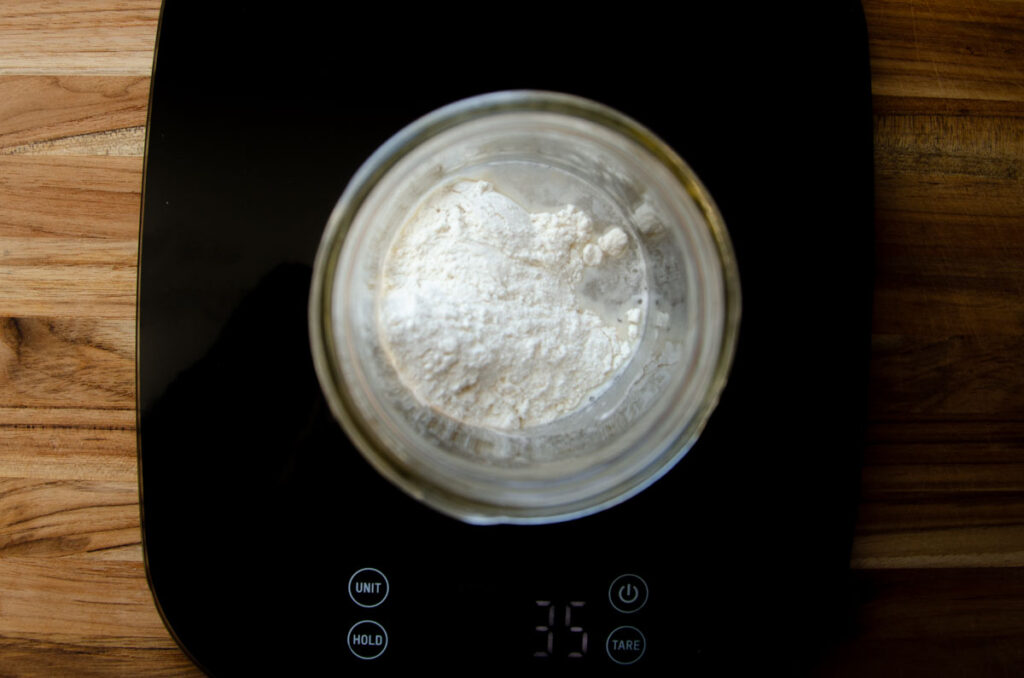
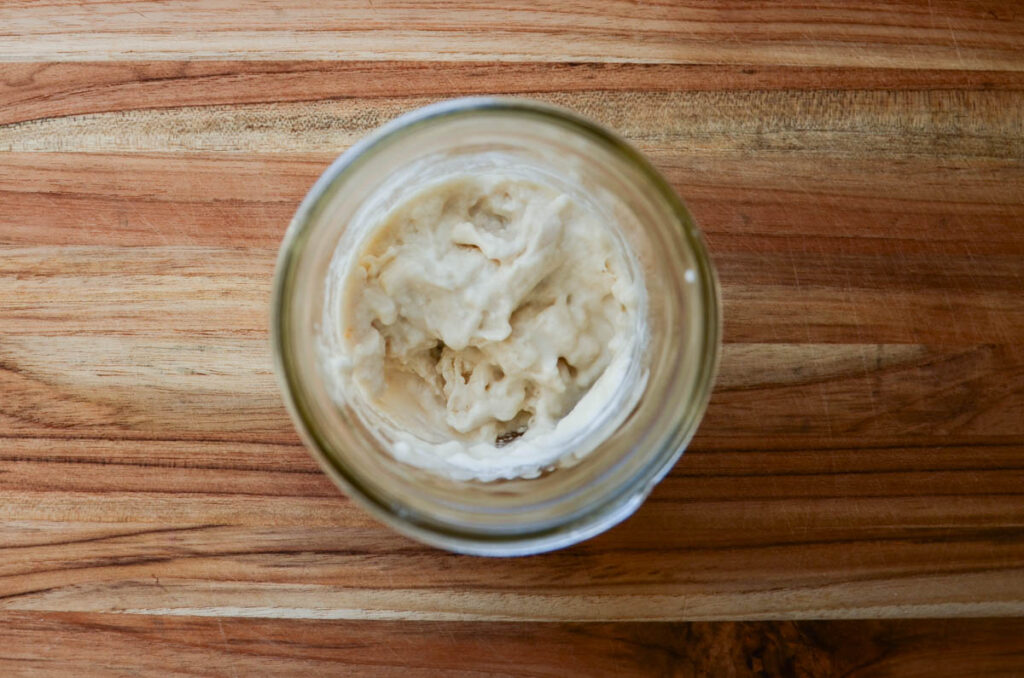
Loosely cover the jar with a lid and place it in a warm spot for 12-24 hours. After the first feeding you may not see much change the first 12 hours. This is normal.
A rubber band placed at the level of the starter right after feeding will mark its starting point, helping you see how much it grows.
Day 2:
The next day, check the starter. At this point, you should see some signs of life with small bubbles at the top of the starter and through the sides of the glass jar. (Picture below on the left) It may have grown a bit, but not doubled in size yet.
Discard half of the starter and feed starter 35 grams of flour and 35 grams of water. (Picture below on the right) Stir to combine and replace the lid before moving to a warm place.
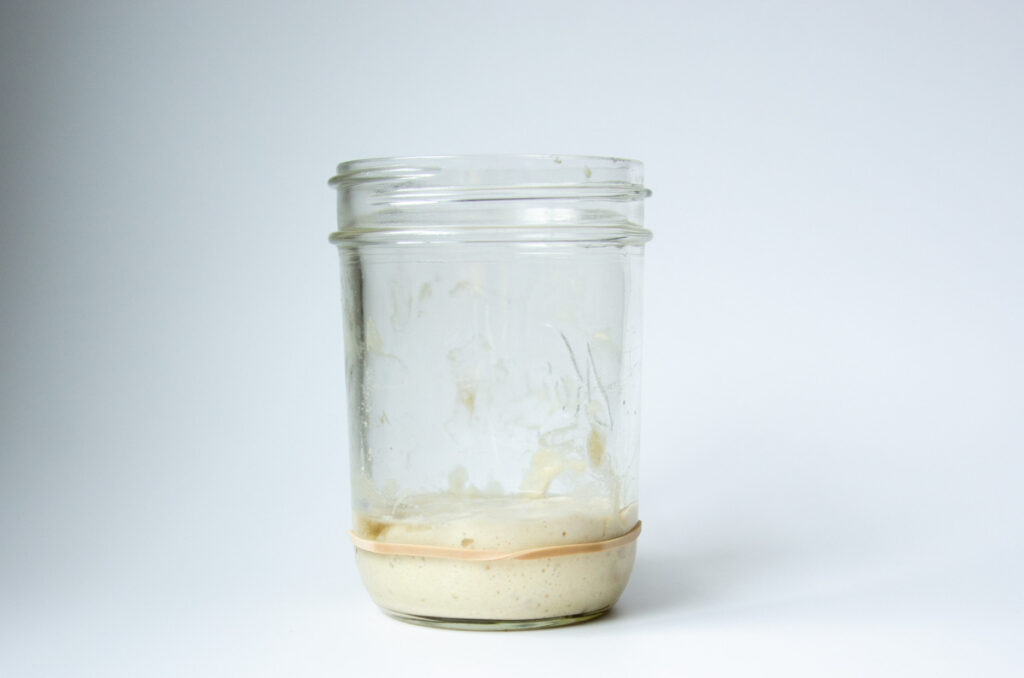
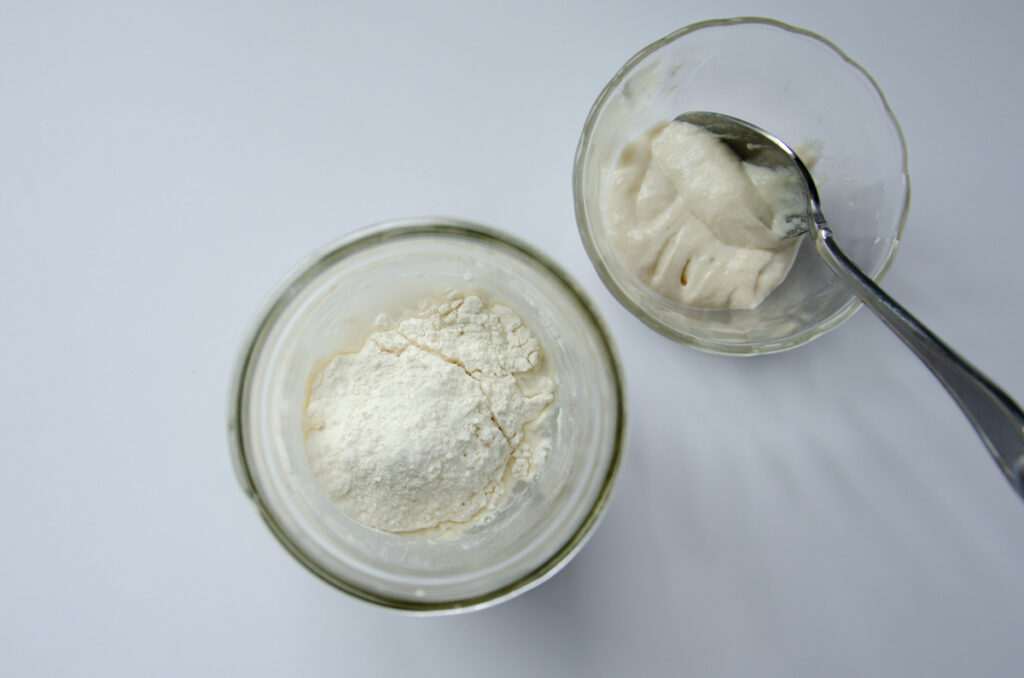
Roughly 12 hours after the second feeding, you should start to see plenty of bubbles and activity in the sourdough starter. (Pictures below-Left picture: Immediately after its 2nd feeding. Right picture: After 12 hours of growth.
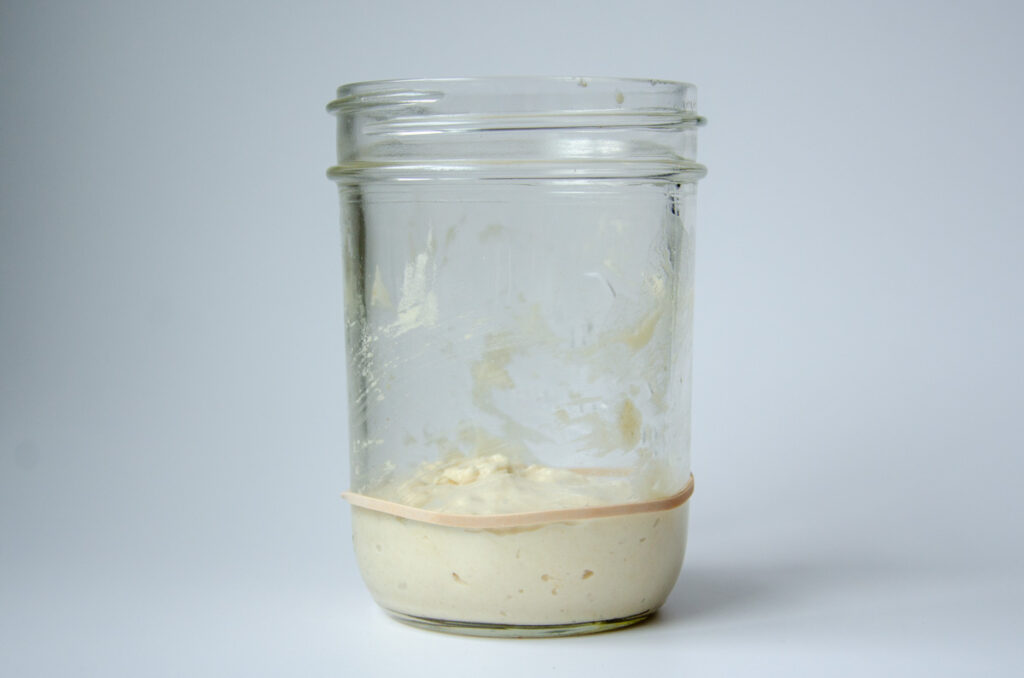
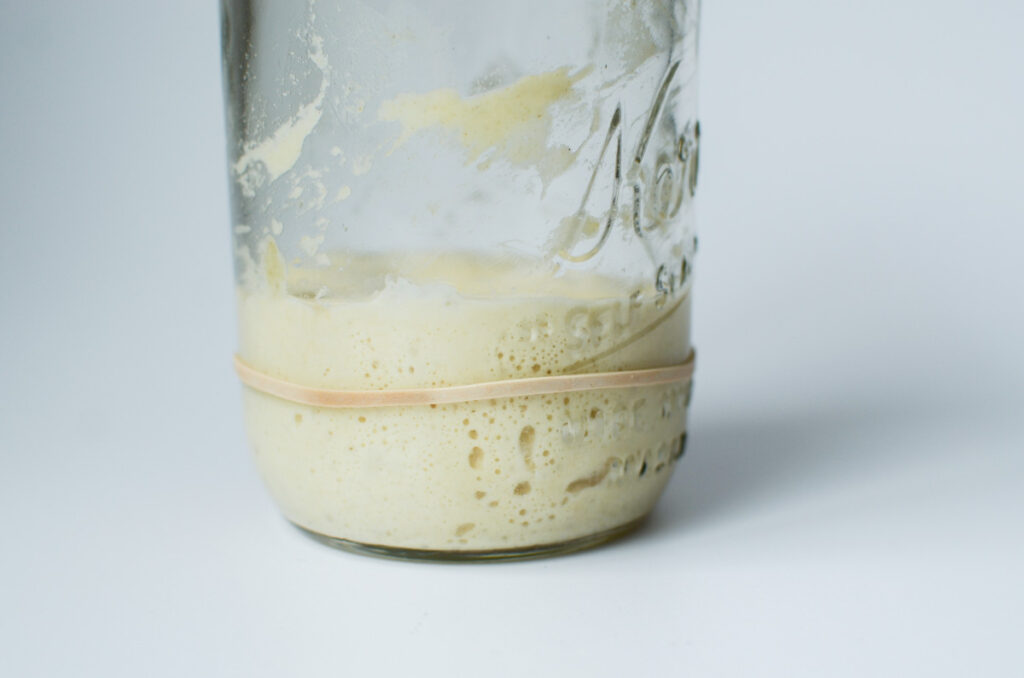
FAQs
Do I Need To Discard Some Each Time I Feed The Starter?
While you don’t NEED to discard any starter before you feed it, you may find that you WANT to. Keeping the sourdough starter limited to a small amount means that you don’t need to feed it quite so much flour with each feeding.
But don’t throw that discard out! Add it to any number of recipes, referred to as discard recipes. This is an easy way to add beneficial bacteria to your baked goods. Left to long ferment, the discard will break down the phytic acid found in grains for improved digestibility.
How Long Does It Take To Revive A Dry Sourdough Starter?
Unfortunately, there isn’t a straight answer to this question since there are some factors that determine the rate of becoming active.
First, temperature matters. The sourdough starter will be more sluggish in cooler temperatures while eating and coming to its peak much quicker with warmer temperatures.
The other factor is whether the mother starter that the dried starter came from was a mature sourdough starter. A new starter hasn’t had as long to develop and will have a smaller population of wild yeast and bacteria. Whereas, a mature starter has had plenty of time to become established with a more complex microbial culture, thus producing a consistent leavening ability.
How Do I Know When My Sourdough Starter Is Ready To Use For Baking?
Your sourdough starter is at the point when it shows signs of life with plenty of bubbles, but how do you know when you can bake with it?
There are two ways that generally let you know when your sourdough starter is at a point to use in baking. First, the sourdough starter doubles within 4-8 hours, sometimes 12 if the climate is cold, with a feeding ratio of 1:1:1. This lets you know there is plenty of microbes to eat and digest the starch, resulting in carbon dioxide captured in the starter, causing it to grow.
The second way is called the float test. Simply add a tablespoon of active sourdough starter to a warm glass of water. If there’s enough carbon dioxide in the starter, it’ll float. If not, then it’ll sink to the bottom of the glass. This test only works with the active sourdough starter since the unfed starter doesn’t have the food to eat and expel any gas.
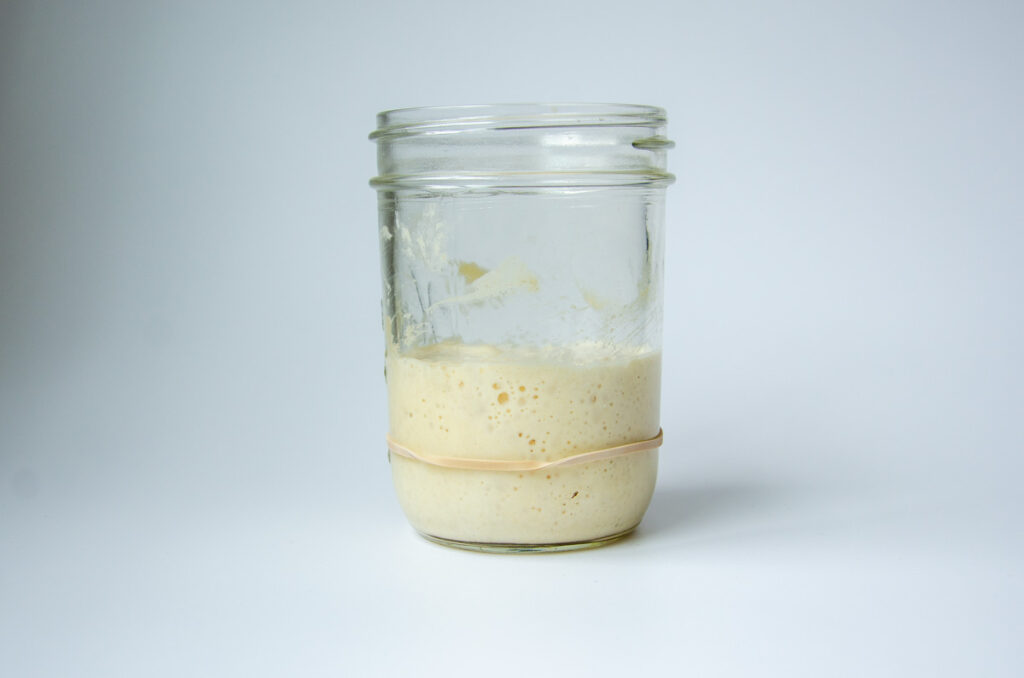
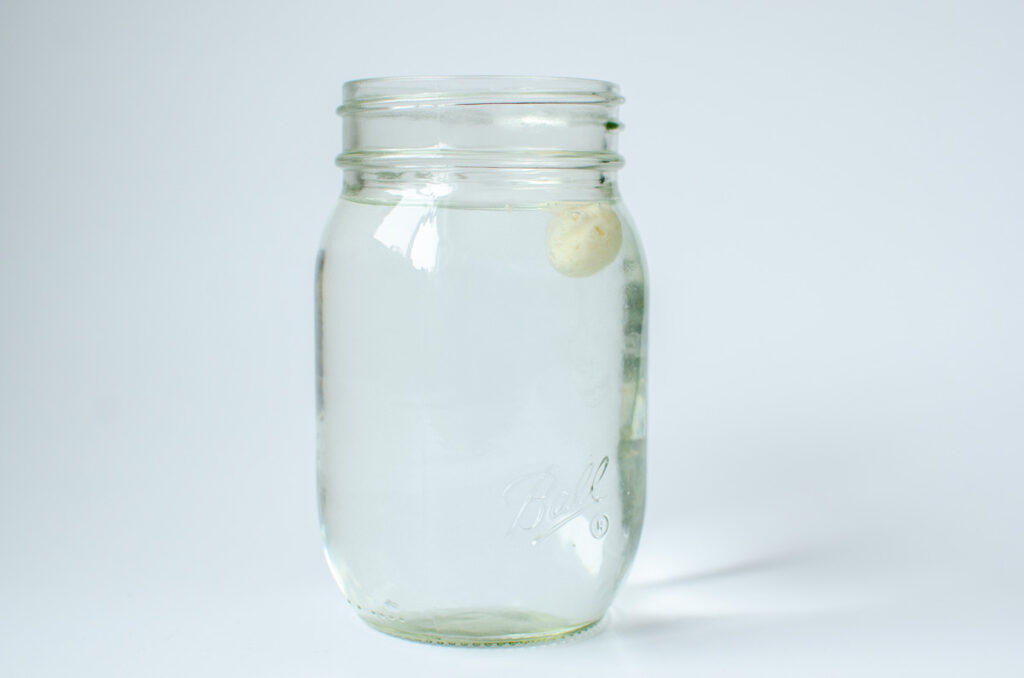
Tips To Rehydrate Dried Sourdough Starter
- Be sure to keep the sourdough covered but loosely fitted to allow air to escape. This will keep fruit flies and other bugs out.
- Set the sourdough starter in a warm location during the winter months. When I made my first starter, the best place I found was in the oven with the light on.

